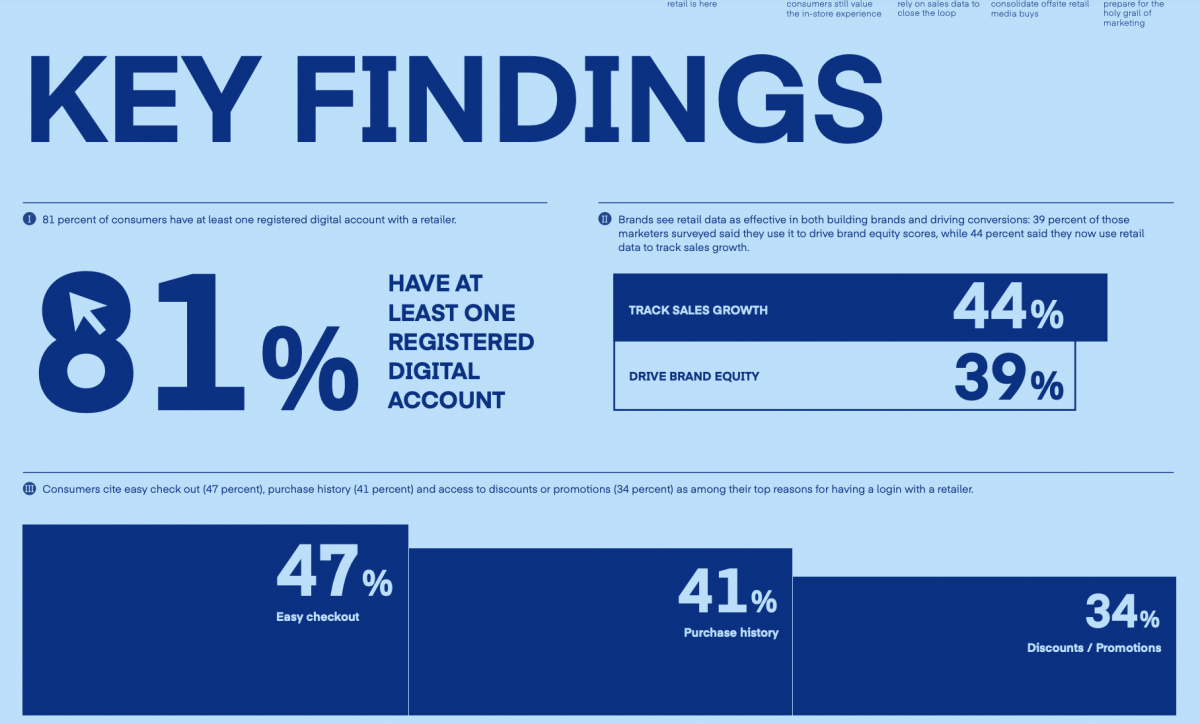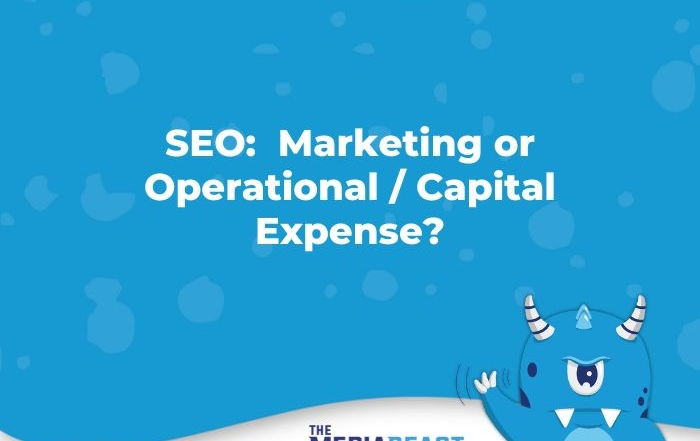2021 Future of Retail Study/Report
The Trade Desk conducted an advertiser study with Material+, surveying more than 150 brand marketers in the United States. Brand marketers are defined as those who work in the marketing area of a consumer goods manufacturing company that sells its products through all types of retailers. Respondents’ teams are responsible for brand (e.g., digital marketing, CRM marketing) and/or shopper marketing.
All respondents held a position of director or above and have a role in deciding where advertising dollars are spent. Fieldwork was conducted between September 1–13, 2021. For the consumer study, we partnered with YouGov to survey more than 5,000 adult (18+) shoppers in the U.S. Fieldwork was conducted between September 17–23, 2021. We qualified “shoppers” as consumers who purchased an item within the past three months in either the home improvement, apparel and clothing, pharmaceuticals, beauty and personal care, or grocery categories.
Key Findings
-
81 percent of consumers have at least one registered digital account with a retailer.
-
Brands see retail data as effective in both building brands and driving conversions:
-
39 percent of those marketers surveyed said they use it (retail data) to drive brand equity scores, while 44 percent said they now use retail data to track sales growth.
-
-
Consumers cite easy check out (47 percent), purchase history (41 percent) and access to discounts or promotions (34 percent) as among their top reasons for having a login with a retailer.
-
71 percent of consumers say they’d prefer to receive limited, tailored ad experiences instead of paying to avoid ads.
-
Over half of consumers (53 percent) said they recognize or notice sponsored products or ads on retail sites. Among those that recall seeing these products or ads, 42 percent claim to frequently or sometimes click to make a purchase.
-
76 percent of marketers plan to use sales data either frequently or very frequently over the next year to connect advertising activity to consumer purchases, whether it happens online or in the store.
-
Despite all the hype surrounding grocery delivery, 70 percent of consumers say they still prefer shopping in-store for their weekly supermarket run.
The next frontier of retail is here
IF 2020 WAS THE YEAR THAT ECOMMERCE SURGED ACROSS NEARLY EVERY BRAND CATEGORY, 2021 HAS BEEN THE YEAR THAT CONSUMERS’ PURCHASE HABITS HAVE SETTLED INTO A NEW SHOPPING NORM.
This emerging retail landscape features a blend of physical and digital shopping, and increasingly savvy consumers who traverse both worlds. And as a result, with new habits and raised expectations, the consumer relationship with brands is evolving. It’s no surprise then that this new normal also has major implications for marketers, who must now address changing consumer preferences relating to retail advertising, personalized shopping experiences and loyalty. The good news is that despite growing concerns about digital privacy, consumers are interested in brand relationships that incorporate advertising. For example, they are generally receptive to targeted ads — particularly from retail brands they like. 71 percent of shoppers surveyed say they’d prefer to receive limited, tailored ad experiences instead of paying to avoid ads.
And those brand relationships are now firmly entrenched on retail ecommerce sites. Over half of consumers (53 percent) said they notice sponsored products or ads on retail sites. Among those that recall seeing these sponsored products or ads, 42 percent claim to frequently or sometimes click to make a purchase. As brands pioneer new approaches to retail marketing, retailers themselves are making more of their valuable shopper data available so that brands can finally make the connection between advertising activity and consumer action, whether online or in the store. And our survey indicates a surge in interest in leveraging this data in order to finally achieve that holy grail of marketing. Across the board, our survey finds that brands are ready for this new retail normal. Indeed, more than 90 percent feel very confident in their ability to adapt successfully to changing consumer behaviors and expectations.
Modern retail consumers still value the in-store experience
THOUGH MUCH ATTENTION HAS BEEN GIVEN TO THE RAPID ACCELERATION OF ECOMMERCE DRIVEN BY THE PANDEMIC, CONSUMERS ARE STILL VACILLATING BETWEEN DIGITAL AND REAL-WORLD SHOPPING
According to eMarketer, while ecommerce spending in the U.S. is expected to surge 18 percent year over year in 2021 — netting out at $933 billion — that figure is still just 15 percent of total retail sales. In fact, eMarketer predicts that brick-and-mortar retail spending will grow 6 percent in 2021, its strongest growth rate in a decade. Indeed, as much as online shopping promises convenience and speed, many consumers still appear to value the in-store experience, whether it’s the immediacy of picking up items they need when they need them, or the ability to assess products before purchase. For instance, 53 percent of respondents say they still mostly shop in physical store locations, with 51 percent and 59 percent citing specifically doing most of their home improvement and pharmaceutical shopping, respectively, in stores. A store’s location is the primary reason that an average of 25 percent of consumers would choose to shop in-store. The popularity of shopping online and picking up in-store may play a role, as 21 percent of consumers listed this option as a top factor for making a purchase online or via a retailer’s app. Despite all the hype surrounding grocery delivery, 70 percent of shoppers say they prefer shopping in-store for their weekly shop. Along those same lines — although grocery delivery services and apps such as Instacart, Doordash, Amazon Fresh, Whole Foods, Postmates and GoPuff have generated increased traction and attention, they are used by just 22 percent of consumers to purchase groceries each month.
For most shopping categories, however, it’s clear consumers’ in-store and online habits are evolving. For instance, consumers are demonstrating an increased willingness to engage with a broad set of preferred retailers, with 81 percent saying they have at least one registered digital account with a retailer. They cite easy check out (47 percent), purchase history (41 percent) and access to discounts or promotions (34 percent) among the top benefits for having a login with a retailer. Building trusted, long-term consumer loyalty has long been a major goal for retailers and brands alike. Given the complexity of the modern retail consumer, the fact that consumers are open to engaging with retailers means brands have an opportunity to evolve those relationships in new ways. It’s this realization that’s driving growing demand for retail media among brands — with access to richer consumer data and purchase data

SEO: Marketing or Operational / Capital Expense?
Any business that leverages their online presence to grow their business must pay attention to search. If you don't think so than you're probably not going to be in business very long or [...]
SEO vs. Social Media Marketing – Which is Better?
With online marketing, there’s a debate raging among experts over which strategy is best to grow your business. Would SEO or social media marketing be the better option? Often, businesses will hire an SEO [...]
15 Reasons Why Your Business Absolutely Needs SEO
Brands need SEO first, as it is the most viable and cost-effective way to both understand and reach customers in key moments that matter. This year, the need for SEO rose to an all-time high. As consumers [...]







